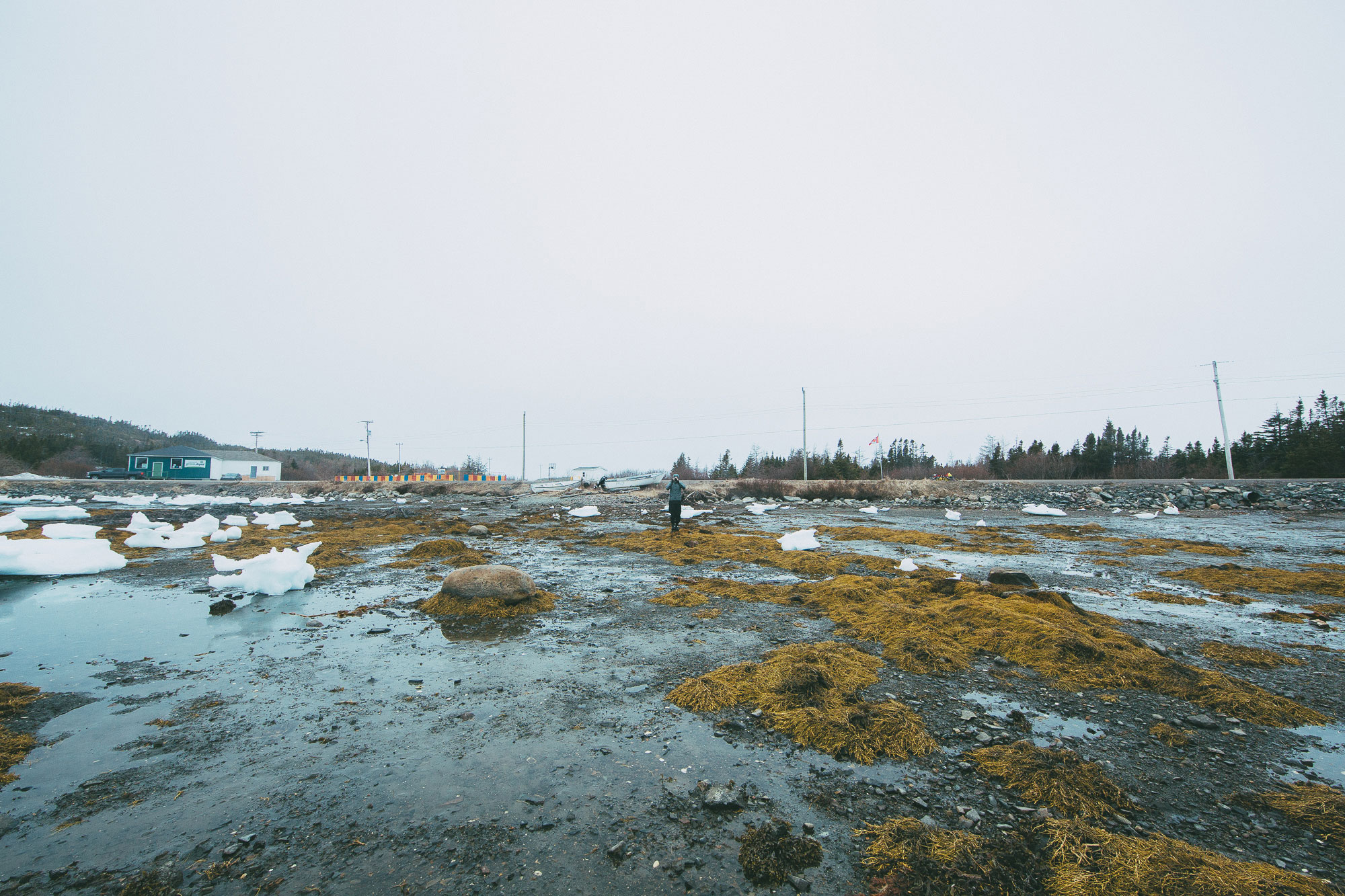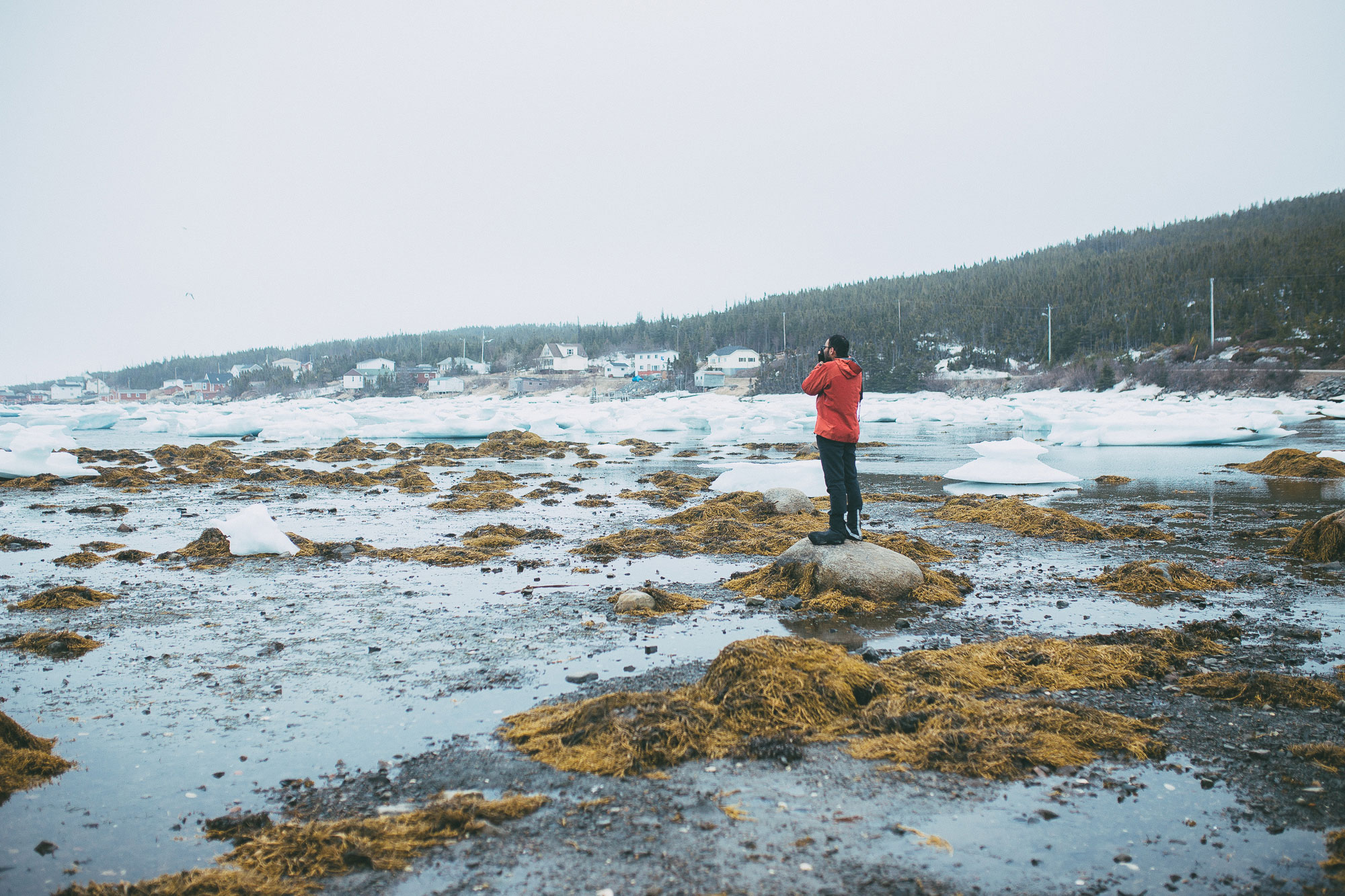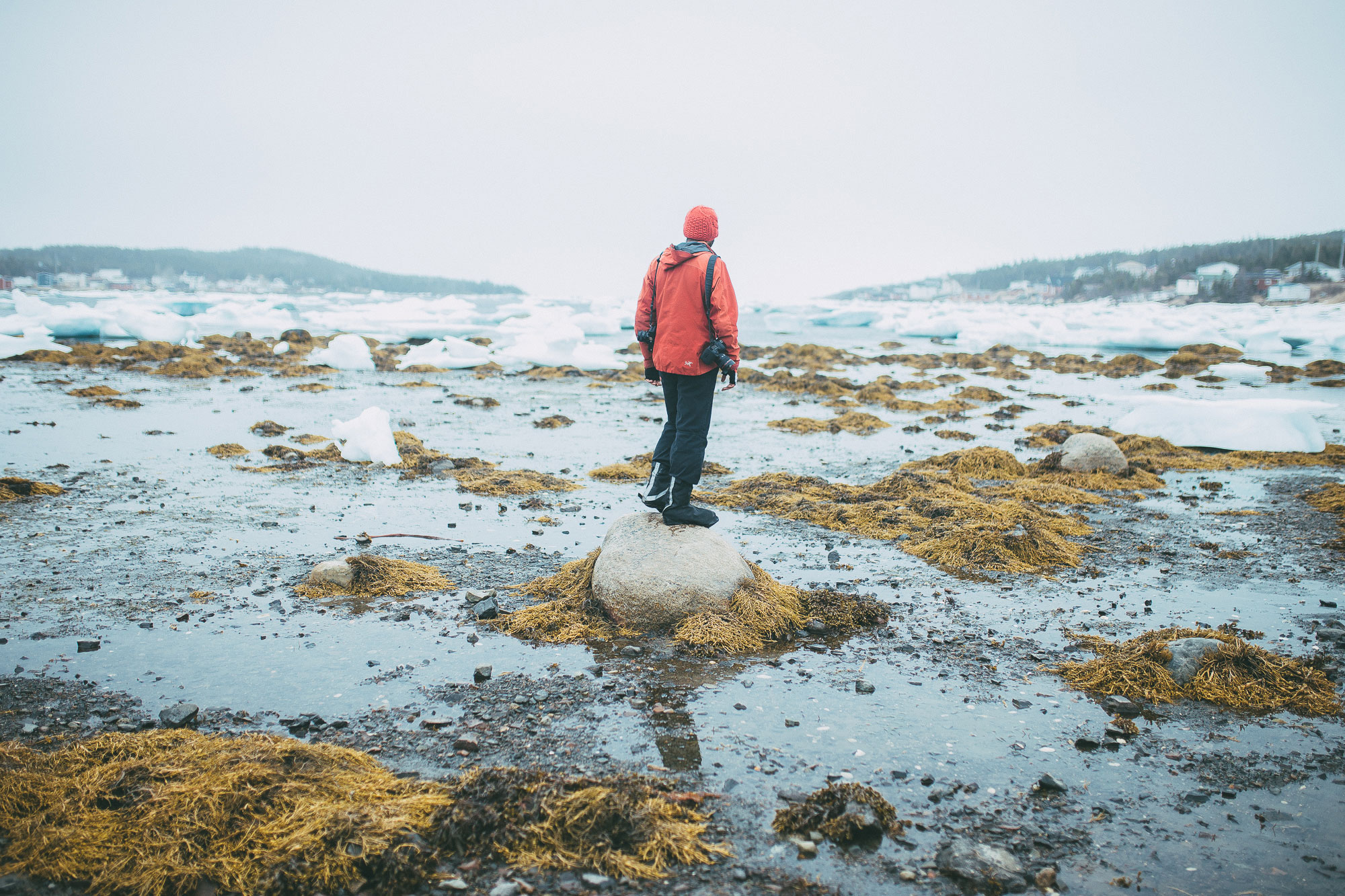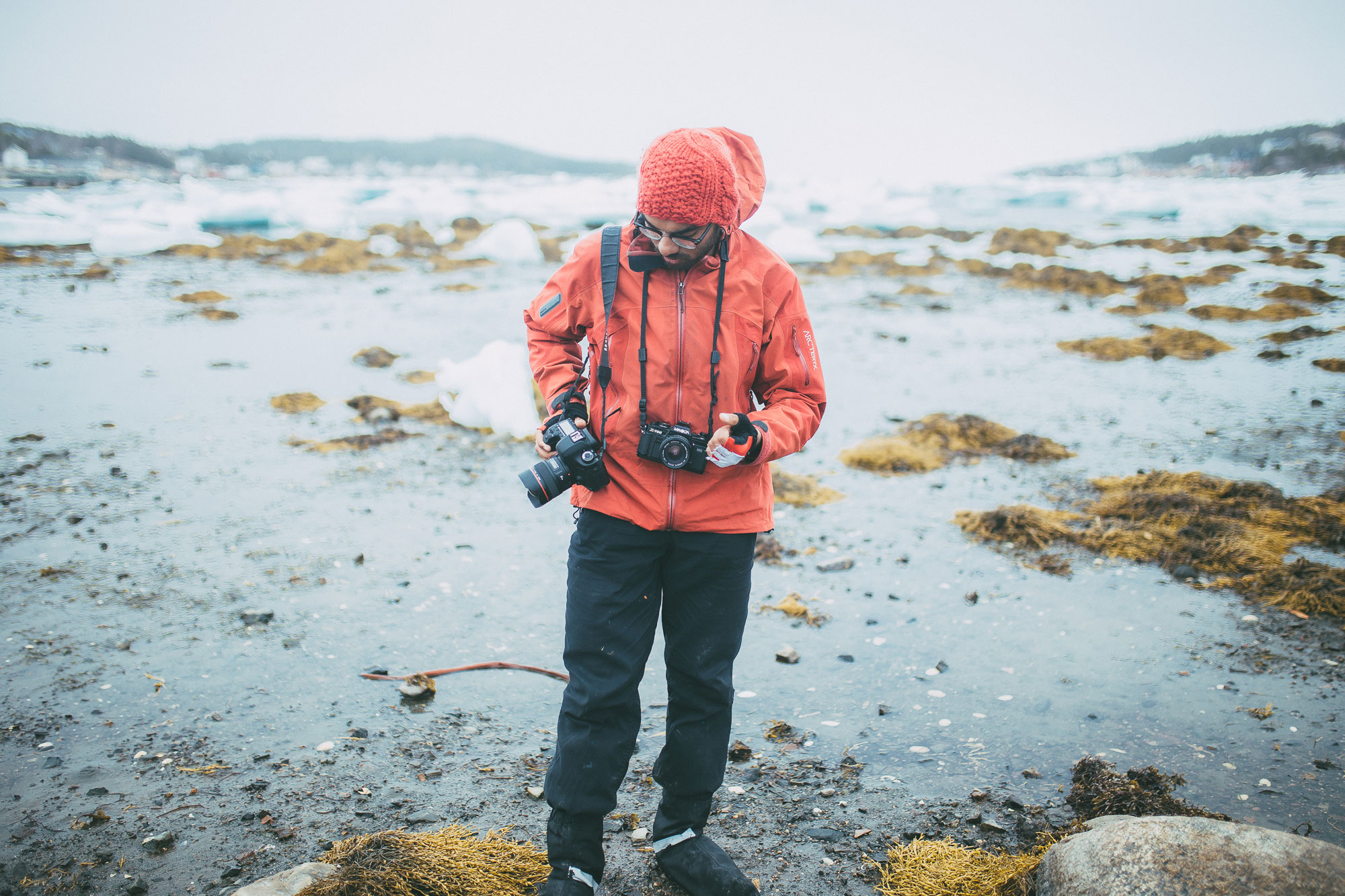We reached the coast with the ferry terminal on our way back across Fogo Island in mid-afternoon. We had a bit of time to spare before the ferry, so we turned off the Trans-Canada Highway onto a little road that, according to the signs, led to Stag Harbour.
It’s funny how much timing can affect your impression of a place. Had we come at a different time of year, we might have seen a sunny coastal beach with tourists picnicking and fishing boats moored offshore. Had we come at a different time of day, we might have seen kids getting off the school bus or playing at the brightly painted playground.
As it was, it was foggy and deserted. This isn’t meant to characterize Stag Harbour, but simply describe my experience within it: fog and ice and emptiness.
Not empty in a particularly bad way. I guess in way that lent itself to the fog and ice. The wood-built playground wasn’t being used, but its colourful paint was a couple years old at the most. The outdoor hockey rink was flooded, but in a springtime way. It wasn’t as if Stag Harbour was abandoned, in fact the smell of woodsmoke suggested otherwise. More as if the islanders were cosied up in their homes, drinking coffee and baking bread and staying dry like any sensible person would do.


Empty in a way that left us alone with the sea. One of the many fascinating things for me about the ocean is how different it can be from one moment and one place to the next. Crashing or lapping, roaring or lingering. Here, it was still. Not quite like glass; more like the stillness of someone holding something fragile, wanting to touch it but afraid if they move too quickly they’ll break it.
The ice was everwhere. The tide had gone out, leaving the remnants of icebergs beached among the rocks and seaweed. They had a different shape on land; I guess it was just more irregular than the shape above sea level I was used to seeing. And they feel different too, mostly just a sense of nearness that I’d never felt while they were in water.
But still they had that same blue. Even amongst the mud and the seaweed, I could see it—the same cold blue that felt like it could cross the North Atlantic.
I kicked one. I wanted to feel what it felt like and my hands were cold. It was harder than I expected, and I found myself wondering how long it had drifted in the open ocean, how long it would take to melt, how long it had taken to freeze in the first place. I thought of when I was in Paris for COP 21 two years ago, and found out that someone had brought to the city an ephemeral exhibit of massive, continually melting, carved ice chunks from an Arctic or Antarctic glacier. These were smaller, but also more rugged, a bit more wild.
I didn’t kick it a second time.



This isn’t the story of a life-changing place or even a spectacularly beautiful one. It’s just a spot that I want to remember, a little bit unique and a little bit out of the way. A few minutes from the ferry terminal and the rest of Newfoundland was a cove that was empty but for fog and ice.